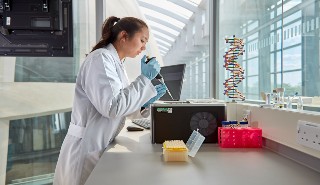University of Reading: Natural History Museum gets £200m for new facility
The Natural History Museum (NHM) has recently benefitted from an additional £20 million of Government funding to create a state-of-the-art collections, digitisation and research centre at the University of Reading-owned Thames Valley Science Park (TVSP), on top of the £182m announced at Spring Budget 2020.
This will support a Government-wide priority to increase investment in UK science, research and development, and facilitates the Museum’s largest collections move for over 140 years.
The NHM Unlocked programme will see 28 million specimens move to the new facility in the Thames Valley Science Park. These specimens cover every ocean and land mass of the planet, ranging from a microscopic ‘water bear’ that can survive in outer space, to the remains of magnificent whales.
The new facility will secure the future of the collection and transform the study of natural history through novel analytical technologies and digitisation. Furthermore, it will open up the collections to researchers around the world for scientific innovation, thereby strengthening the UK’s position in finding solutions to the planetary emergency.
The University of Reading’s scientific research areas, including its world-leading expertise on climate science, align well with the Museum’s research expertise and collections. The link between the Natural History Museum and the University of Reading will provide key research opportunities, including funding for PhD students.
Collaboration between the two institutions could help produce solutions on pivotal global topics ranging from biodiversity loss, to the impact of a changing climate and use of Earth’s resources to deliver a green economy. At TVSP, the Museum will join other science and creative innovators, including the British Museum and Shinfield Studios.
Professor Robert Van de Noort, Vice-Chancellor of the University of Reading, said: “This announcement brings the University and the Natural History Museum a step closer to delivering this important collections and research centre. It will open up innovative research opportunities for academics here in Reading and around the world.
“It is great news for the University community and the people of Reading and Wokingham, and we look forward to sharing more detailed plans with the local community soon.”
Doug Gurr, Director of the Natural History Museum, said: “I thank the Government for providing this substantial investment which allows the Natural History Museum to safely store its irreplaceable collections for generations to come. The Museum is looking forward to being a part of the vibrant local community in Wokingham. We are extremely excited to partner with the University of Reading with all the research potential – from maintaining food security and improving biodiversity to addressing climate change – that this partnership will foster.”
The low carbon impact, sustainable building is currently expected to be completed in 2027 and operational by 2031, employing best-in-class design practices to reduce lifetime energy and water use. In due course, a planning application will be submitted to the Wokingham planning authority.

